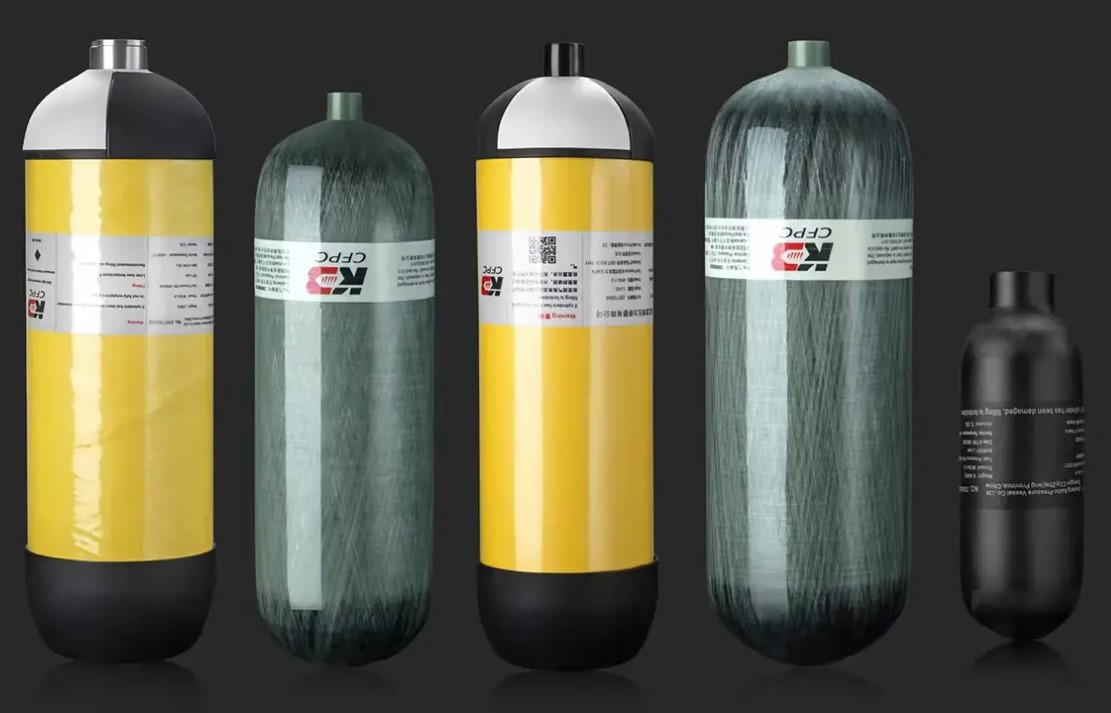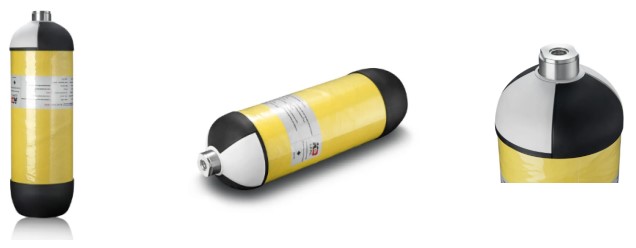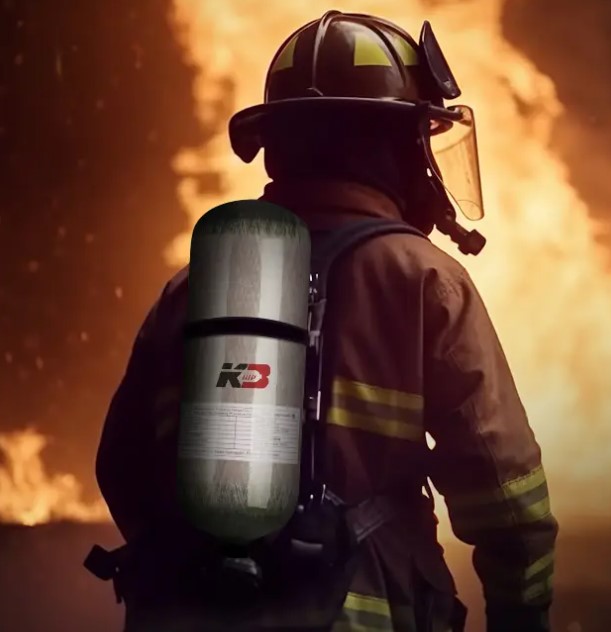Firefighting equipment has evolved significantly over the years, with a strong focus on improving safety, efficiency, and durability. One of the key components of modern firefighting gear is the self-contained breathing apparatus (SCBA), which relies on high-pressure cylinders to provide breathable air in hazardous conditions. Traditionally, Type 3 carbon fiber cylinders were the industry standard, but in recent years, there has been a noticeable shift toward Type 4 carbon fiber cylinders, despite their higher cost. So, what is driving this change? Let’s explore the reasons behind the growing demand for Type 4 cylinders and why they are becoming the preferred choice for many firefighting departments.
Understanding Type 3 and Type 4 Carbon Fiber Cylinders
Before discussing the reasons for the shift, it is essential to understand the fundamental differences between Type 3 and Type 4 cylinders.
- Type 3 Carbon Fiber Cylinders: These cylinders have an aluminum alloy liner wrapped with carbon fiber composite. The metal liner provides structural integrity, while the carbon fiber wrapping enhances strength and reduces weight compared to traditional steel cylinders.
- Type 4 Carbon Fiber Cylinders: These cylinders have a non-metallic polymer liner (usually plastic) fully wrapped with carbon fiber composite. Without the aluminum liner, Type 4 cylinders are significantly lighter and corrosion-resistant.
Both types are used in high-pressure applications, including SCBAs, but their performance characteristics differ in ways that impact firefighters and emergency responders.
Key Reasons for the Growing Preference for Type 4 Cylinders
1. Weight Reduction and Improved Mobility
One of the biggest advantages of Type 4 cylinders is their reduced weight. Firefighters carry heavy gear, including turnout gear, helmets, and oxygen cylinders, often in high-stress environments. A lighter cylinder means less strain on the body, increased endurance, and improved maneuverability in emergency situations. This is particularly important when navigating through confined spaces, climbing stairs, or performing rescues in hazardous conditions.
2. Longer Service Life and Durability
Type 4 cylinders typically have a longer service life compared to Type 3 cylinders. The plastic liner is not susceptible to corrosion like aluminum, which can extend the usable lifespan of the cylinder. Additionally, the full carbon fiber composite structure provides excellent impact resistance, reducing the risk of damage from drops, collisions, or rough handling during firefighting operations.
3. Corrosion and Chemical Resistance
Firefighters often work in extreme conditions, where exposure to water, chemicals, and harsh environments is common. Type 3 cylinders, with their aluminum liners, are prone to corrosion over time, especially if they suffer internal moisture buildup. In contrast, Type 4 cylinders are made with polymer liners that do not corrode, ensuring a longer-lasting and more reliable air supply system.
4. Higher Air Capacity in a Compact Design
Another reason for the increased demand for Type 4 cylinders is their ability to store more air at higher pressures without significantly increasing weight. Many modern Type 4 cylinders can handle pressures of up to 4500 psi or more while maintaining a compact design. This allows firefighters to have extended breathing time, reducing the need for frequent cylinder changes during long operations.
5. Better Thermal and Mechanical Performance
During intense firefighting operations, SCBA cylinders are exposed to extreme heat. While both Type 3 and Type 4 cylinders must meet strict safety standards, Type 4 cylinders tend to have better thermal resistance properties due to the absence of metal components. The carbon fiber wrapping provides excellent insulation, reducing the risk of heat transfer that could weaken the cylinder structure over time.
6. Improved Ergonomics and Comfort
Firefighting departments are increasingly focusing on firefighter safety and ergonomics. Type 4 cylinders are designed to be more comfortable to carry, reducing strain on the back and shoulders. This ergonomic advantage translates into better operational efficiency, as firefighters can perform their duties with less physical fatigue.
7. Regulatory and Safety Standards Compliance
Many countries and firefighting agencies are updating their safety regulations and SCBA standards. Type 4 cylinders often exceed existing regulatory requirements due to their advanced materials and improved durability. This makes them a future-proof investment for fire departments that want to ensure compliance with evolving safety standards.
Balancing Cost and Benefits
Despite their clear advantages, Type 4 cylinders do come at a higher initial cost compared to Type 3 cylinders. The manufacturing process for full carbon fiber composite cylinders is more complex, and the materials used are more expensive. However, when considering the long-term benefits—such as reduced maintenance costs, extended service life, and improved firefighter safety—the investment in Type 4 cylinders becomes more justifiable.
Conclusion
The growing adoption of Type 4 carbon fiber cylinders in firefighting is driven by their superior weight reduction, durability, corrosion resistance, air capacity, and overall performance. While the higher upfront cost may be a concern, many fire departments are recognizing the long-term advantages of investing in Type 4 cylinders to enhance firefighter safety and operational efficiency. As firefighting technology continues to evolve, Type 4 cylinders are likely to become the new standard for SCBAs, ensuring that first responders have the best possible equipment to perform their lifesaving duties.
Post time: Feb-06-2025



